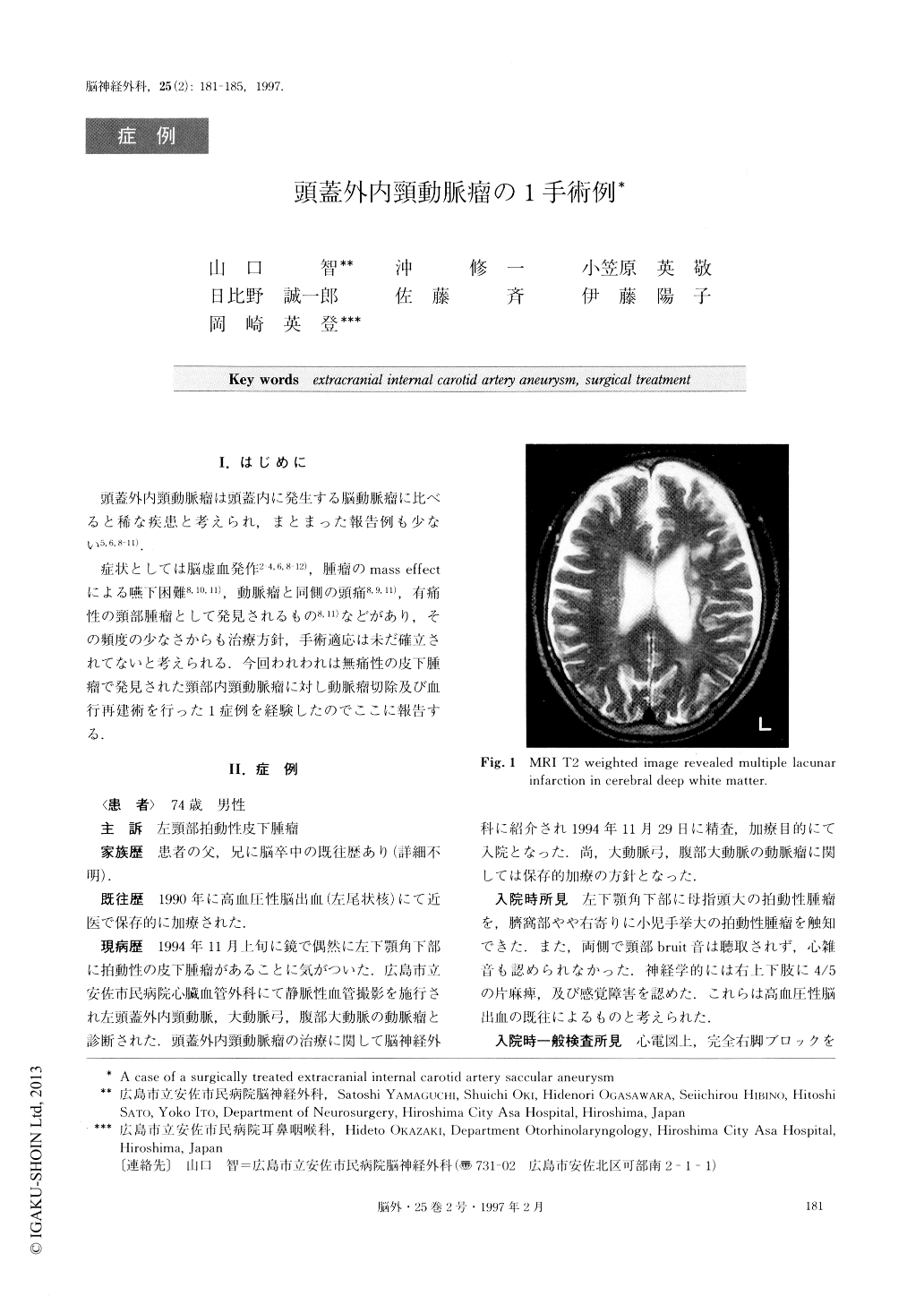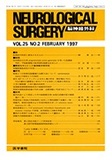Japanese
English
- 有料閲覧
- Abstract 文献概要
- 1ページ目 Look Inside
I.はじめに
頭蓋外内頸動脈瘤は頭蓋内に発生する脳動脈瘤に比べると稀な疾患と考えられ,まとまった報告例も少ない5,6,8-11).
症状としては脳虚血発作2-4,6,8-12),腫瘤のmass effectによる嚥下困難8,10,11),動脈瘤と同側の頭痛8,9,11,有痛性の頸部腫瘤として発見されるもの8,11)などがあり,その頻度の少なさからも治療方針,手術適応は未だ確立されてないと考えられる.今回われわれは無痛性の皮下腫瘤で発見された頸部内頸動脈瘤に対し動脈瘤切除及び血行再建術を行った1症例を経験したのでここに報告する.
Extracranial internal carotid artery aneurysm is rare. Most cases are due to spontaneous or traumatic dissec-tion of the cervical internal carotid artery. Here we re-port a case of surgically treated extracranial internal carotid artery (ICA) aneurysm.
A 74-year-old man noticed a pulsatile mass just be-low the left mandibular angle. Intravenous digital sub-traction angiography revealed multiple aneurysms in the systemic arteries, including the aortic arch, abdo-minal aorta and left extracranial ICA. It was decided to treat the aneurysms of the aortic arch and of the abdo-minal aorta conservatively. Cerebral angiography, however, showed a saccular aneurysm which projected latero-posteriorly at the C2 level of the left extracranial ICA. Although the patient had no previous ischemic event, we decided to treat this aneurysm surgically in view of the risk of cerebral ischemia caused by in-traaneurysmal thrombus formation or rupture of the aneurysm by neck injury. The operation was performed under mild hypothermal general anesthesia. Elec-troencephalography was carried out during the opera-tion. A skin incison was made from the anterior border of the sternocleidomastoid muscle to the pretragal re-gion to expose the parotid gland. This skin incision, elevation of the parotid gland and division of the digas-tric muscle were useful for exposing the distal portion of the extracranial ICA. After trapping of the aneu-rysm, it was punctured and collapsed by aspiration and the dome was excised at its neck. The ICA was then reconstructed by suturing the cut neck of the aneurysm. Patency of the ICA was confirmed by postoperative angiography. The postoperative course was smooth ex-cept for hoarseness, which was caused by damage to a minor branch of the vagus nerve during exposure of the aneurysmal dome.

Copyright © 1997, Igaku-Shoin Ltd. All rights reserved.


